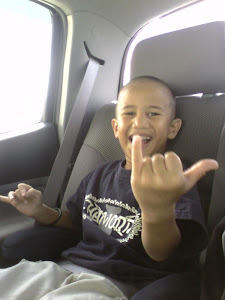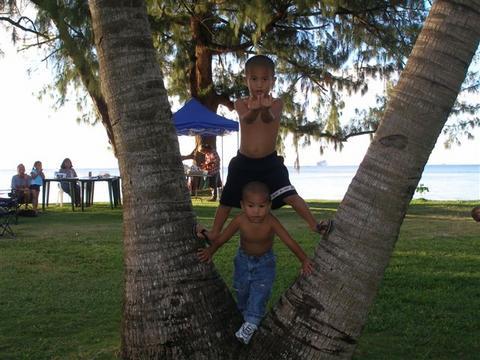
1). What is DNA?
*Deoxyribonucleic Acid
2). What are the 4 bases?
*Adenine, Thymine, Cytosine and Guanine (A,T,C & G)
3). What 2 pieces if information did the scientists need to solve the elusive structure of DNA?
*One was phosphate backbone on the outside with base on the inside, and another is the molecule that was a double helix. It's also important to figure out that two strands run in opposite directions and that the molecule had a specific base pairing.
4). What are the specific base pairs?
* Adenine, Thymine, Guanine and Cytosine
5). How does the pairing rule effect the shape and structure of DNA?
*The amount of adenine is always equal to the amount of thymine, the same goes for the pairing cytosine and guanine. Watson was able to figure out the pairing by this information. If the bases were paired this way the rung of twisted ladder in the helix will be equal in length, and the sugar-phosphate backbone will be smooth.
6). What does the DNA do during cell division?
*The DNA is able to unzip into two pieces. One new molecule is formed from each half-ladder and due to the specific pairing it gives rise to indentical daughters copies from each parent molecule.
7). How many base pairs does E. Coli have? How long does it take to replicate? How is the DNA
packaged in the cell?
*E. coli bacteria has 1 million base pairs. It replicates once every 20 minutes. It is curled up in a condensed fashion.
8). How many base pairs does Human DNA have? How long does it take to replicate? How is the DNA packaged in the cell?
*Human DNA has 3 million base pairs and make up a total of almost a meter-long stretch of DNA in every cell in our bodies. The genetic material is tightly rolled up on structures called HISTONES.
*Deoxyribonucleic Acid
2). What are the 4 bases?
*Adenine, Thymine, Cytosine and Guanine (A,T,C & G)
3). What 2 pieces if information did the scientists need to solve the elusive structure of DNA?
*One was phosphate backbone on the outside with base on the inside, and another is the molecule that was a double helix. It's also important to figure out that two strands run in opposite directions and that the molecule had a specific base pairing.
4). What are the specific base pairs?
* Adenine, Thymine, Guanine and Cytosine
5). How does the pairing rule effect the shape and structure of DNA?
*The amount of adenine is always equal to the amount of thymine, the same goes for the pairing cytosine and guanine. Watson was able to figure out the pairing by this information. If the bases were paired this way the rung of twisted ladder in the helix will be equal in length, and the sugar-phosphate backbone will be smooth.
6). What does the DNA do during cell division?
*The DNA is able to unzip into two pieces. One new molecule is formed from each half-ladder and due to the specific pairing it gives rise to indentical daughters copies from each parent molecule.
7). How many base pairs does E. Coli have? How long does it take to replicate? How is the DNA
packaged in the cell?
*E. coli bacteria has 1 million base pairs. It replicates once every 20 minutes. It is curled up in a condensed fashion.
8). How many base pairs does Human DNA have? How long does it take to replicate? How is the DNA packaged in the cell?
*Human DNA has 3 million base pairs and make up a total of almost a meter-long stretch of DNA in every cell in our bodies. The genetic material is tightly rolled up on structures called HISTONES.
1). What is RNA? How different is it from DNA?
*Ribonucleic Acid. RNA is made up of a single strand. The base T for thymine is replaced by U for uracil in RNA.
2). How are the RNA messages formed?
*The alphabet in RNA molecule contains 4 lette A, U, C, G as mentioned. To form a word in the RNA language, three letters are referred to a triplet or a condon.
3). How are the RNA messages interpreted?
*Every organism has an identical system that is able to read the RNA, interpret different condons and construct a protein with various condon of the amino acids mentioned.
1). Describe cell cycle?
* It is the orderly time that occurs when a cell divides to form two daughter cell to the time the daughter cell divides again.
2). What is nuclear division?
* Nuclear division is also known as Karyokinesis, the nucleus divides during this process. Nuclear division includes several subphases. Prophase, Metaphase, Anaphase, and Telaphase.
3). What is interphase?
* It's when the cell grows and metabolic activity is very high.
4). Cytokinesis
* It's when the Cytoplasm divides and two identical daughter cells are formed.
5). Homologous chromosomes
* A pair of chromosomes containing the sane linear gene sequences, each derived from one parent. The chromosomes tend to pair or synapse during meiosis. They have the same genes, in the same location, but the genes have different versions (not in sister chromatids that are exact replicas)
6). Phase of mitosis (5 of them)
* Interphase, Prophase, Metaphase, Anaphase, and Telophase
7). Phases of meiosis and how it is different from mitosis.
* Prophase, Metaphase, Anaphase and Telaphase. Meiosis makes twice as much as Mitosis.
8). Describe the process and purpose of crossing over.
* Crossing over takes place during prophase I of meiosis. In prophase I of meiosis, the replicated homologous pair of chromosomes comes together in the process called synapsis, and sections of the chromosomes are exchanged. After crossing over the results of chromosomes are neither entirely maternal nor parental, but it contains genes from both parents. Synapsis and crossing over occur only in meiosis.
*Ribonucleic Acid. RNA is made up of a single strand. The base T for thymine is replaced by U for uracil in RNA.
2). How are the RNA messages formed?
*The alphabet in RNA molecule contains 4 lette A, U, C, G as mentioned. To form a word in the RNA language, three letters are referred to a triplet or a condon.
3). How are the RNA messages interpreted?
*Every organism has an identical system that is able to read the RNA, interpret different condons and construct a protein with various condon of the amino acids mentioned.
1). Describe cell cycle?
* It is the orderly time that occurs when a cell divides to form two daughter cell to the time the daughter cell divides again.
2). What is nuclear division?
* Nuclear division is also known as Karyokinesis, the nucleus divides during this process. Nuclear division includes several subphases. Prophase, Metaphase, Anaphase, and Telaphase.
3). What is interphase?
* It's when the cell grows and metabolic activity is very high.
4). Cytokinesis
* It's when the Cytoplasm divides and two identical daughter cells are formed.
5). Homologous chromosomes
* A pair of chromosomes containing the sane linear gene sequences, each derived from one parent. The chromosomes tend to pair or synapse during meiosis. They have the same genes, in the same location, but the genes have different versions (not in sister chromatids that are exact replicas)
6). Phase of mitosis (5 of them)
* Interphase, Prophase, Metaphase, Anaphase, and Telophase
7). Phases of meiosis and how it is different from mitosis.
* Prophase, Metaphase, Anaphase and Telaphase. Meiosis makes twice as much as Mitosis.
8). Describe the process and purpose of crossing over.
* Crossing over takes place during prophase I of meiosis. In prophase I of meiosis, the replicated homologous pair of chromosomes comes together in the process called synapsis, and sections of the chromosomes are exchanged. After crossing over the results of chromosomes are neither entirely maternal nor parental, but it contains genes from both parents. Synapsis and crossing over occur only in meiosis.






